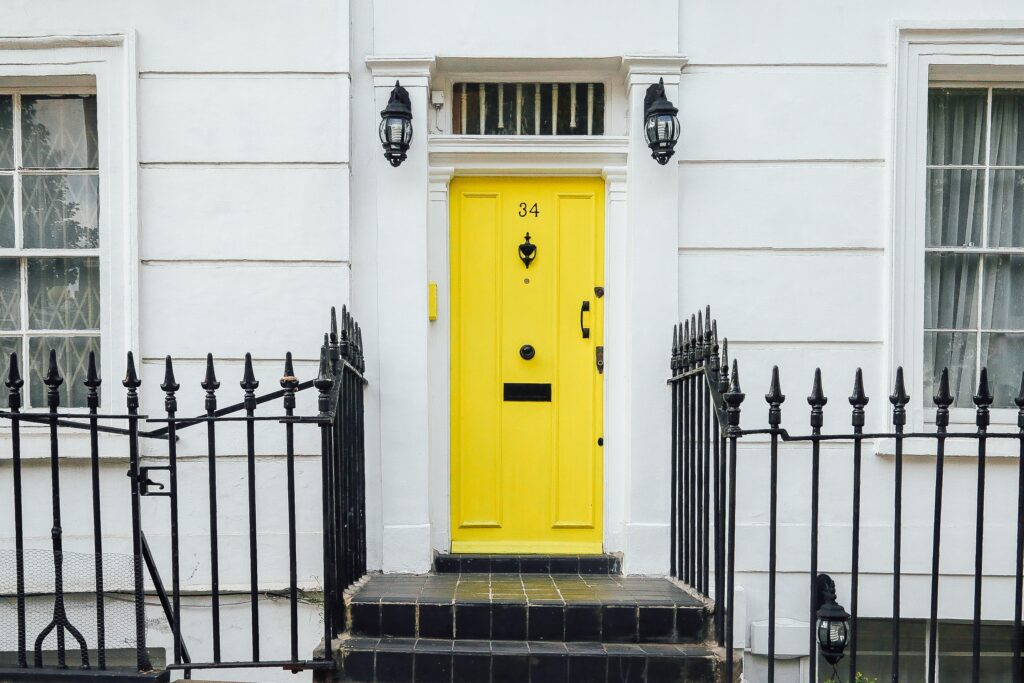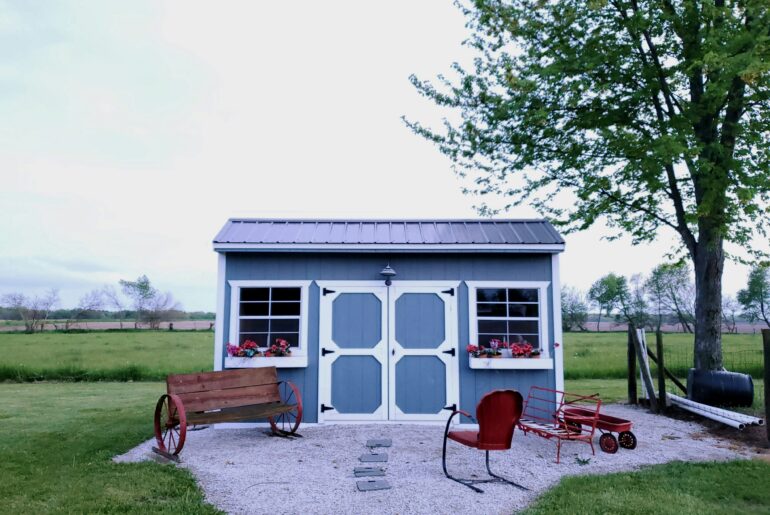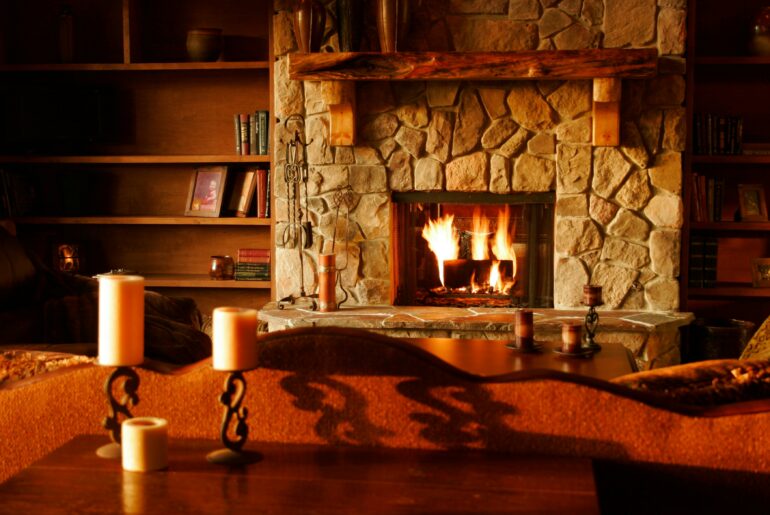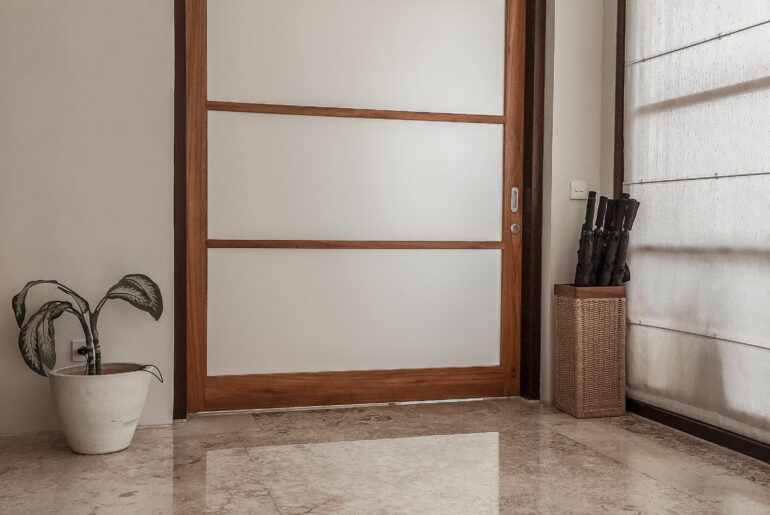Your external doors, at the front, at the side, to the garage, or the mud room, can sometimes be the weak link in a house’s thermal envelope.
.A poorly insulated, badly installed, old, or otherwise deteriorated front door could be costing you money every day through the winter months when you are heating your home. There are ways and means to improve an existing exterior door, but budget allowing, oftentimes a replacement option is the best way forward.
Here’s our look at some of the options currently available.
How Can I Tell Whether A Door is Right for My Project?
The National Fenestration Rating Council (NFRC) interprets US energy performance ratings so consumers can better understand which product is better for their requirements. The NFRC Energy Star labels are designed to make selecting the right door simpler, with both U-values and SHGC Values.
SHGC stands for the Solar Heat Gain Coefficient. A low number is best in a climate zone where cooling is important, while a higher number is better in a cold climate zone.
With U-Values, the lower the number, the better the door is as an insulator.
Option #1. Therma-Tru Benchmark Shaker Craftsman Front Door with Storm Door
- This is one of Lowes’s best-selling door sets. It is Energy Star certified in Northern, Northern/Central, Southern/Central, and Southern climate zones.
- It sports low emissivity glass and a brick foam core insulation.
- It is pre-hung, making installation fast, and comes ready to paint so you can make it your own.
- The fiberglass panels won’t warp, rust, dent, or rot either.
- It also comes with a limited lifetime warranty.
- It doesn’t come with a handle and lock set, which means you can either recycle your existing lock, if it’s a fit, or add a new set (average price $70) to the budget.
- The cost for the door, with the Larson storm door combo, is between $693 & $793.
Option #2. Masonite Energy Performance Door
- Available in either steel or fiberglass, Masonite has a wide range of door sets that are good to grace most properties.
- Masonite focuses on the door seal and claims that their system is 64% more energy efficient than its nearest competitor.
- Certainly, if you are in a climate zone or area subject to high winds, then a Masonite door might be the right choice.
- Their door seal system has adaptive weatherstripping, a square edge door, a self-adjusting cill, and enhanced corner pads that should stop most air leakage.
- The Half-Lite panel steel door set starts at around $400.
Option #3. Masonite Steel Universal Single Front Door
- If you are renovating, or building on a budget, then these steel doors from Masonite are your friend. Not only do they look good, but they provide great security too.
- Perfect for garage, mud room, or rear access points.
- They are insulated with closed-cell foam, so their performance in cold climates is assured, but it will be up to you, or your carpenter, to make sure they are fitted properly, and that they are properly weather-stripped in the frame to ensure top performance.
- These doors cost between $170 and $186 depending on size.
Option #4. The Embarq Entry Door
- There’s nothing like confidence in your product, and Embarq believes that they have re-invented the entry door, and built the most energy-efficient system in the US.
- Their entry doors are 43% thicker, which gives them a claim to an insulating performance rated four times higher than the average insulated fiberglass door.
- They look good, but the only downside is that they are not a DIY option as they only sell through local installers. However, if you are a contractor it might be worth discussing options with your local window and door installation business.
Option #5. Glory Iron Doors Thermal Break Made-to-Measure
- These doors are crafted from steel and have a large amount of glass in their design to show off the beautiful hand-crafted scrollwork. A true statement door for any home.
- The glass panes are openable from the inside to enable cleaning.
- They are constructed with a thermal break to minimize heat transfer through the frame, but this has to be requested at the point of order.
- Steel is galvanized and then coated with seven layers of paint to prevent rust.
- The 2” x 6” standard 12-gauge steel jambs are filled with closed-cell foam insulation.
- If you are building a new house, or renovating your dream home then these doors will need to be planned for and ordered well in advance. Delivery from drawing approval is currently between 14 and 16 weeks!
- You can’t be in a hurry, but then, these doors are individually made to order.
- Prices start at around $3,100, including locksets, and curbside shipping to anywhere in the US is free.
The Grand Entrance
Both of the market leaders provide options for most standard-size double-door sets and single-door sets with or without side windows. Most of the big box hardware stores will have a range in stock, but it’s best to call ahead to make sure they have what you want.
Can You Add Insulation To Existing Doors?
Yes, you can. But the best way to improve the performance of your front door is to cut out as many air leaks as possible. Here’s how to tackle an existing door.
- Fit a door brush to the bottom of the door to close the gap between it and the threshold.
- Make sure the threshold is properly fitted. Run a bead of silicone under it before fixing it to seal.
- Fit a weatherstrip around the doorstop. Make sure it is the correct one for your climate zone.
- Caulk and/or foam the gap between the frame and the wall (link to previous article).
- Insulate the glass with an insulation film. In a pinch, bubblewrap does the job!
- Fit a storm door to reduce direct wind access and provide a secondary layer of protection.
- Glue foamboard to the interior side of the door. Seal the edges with mastic sealant.
- If the door is hollow drill holes at regular intervals and fill with a low-rise spray foam.
- Hang a heavy, or lined curtain across the doorway.





